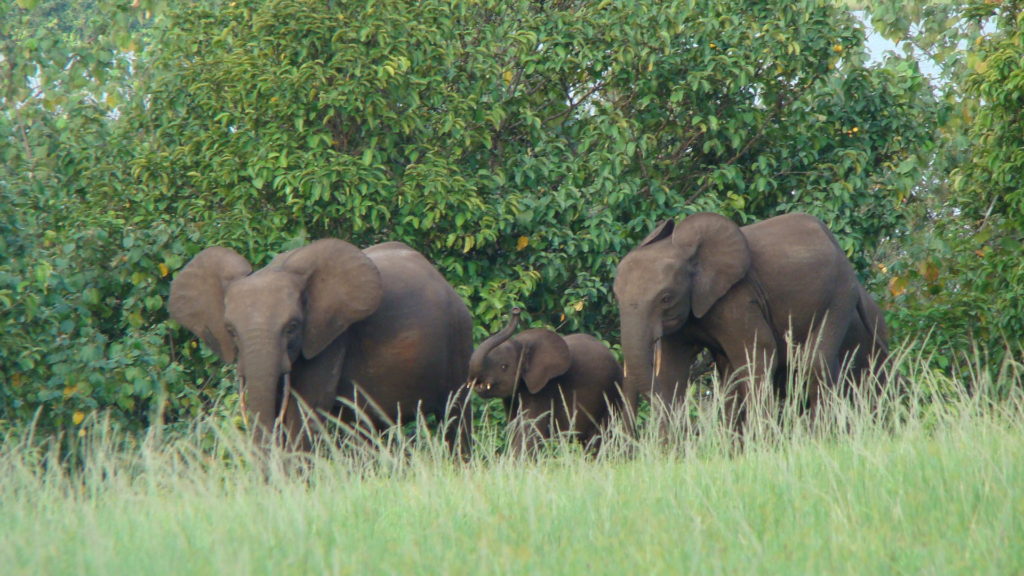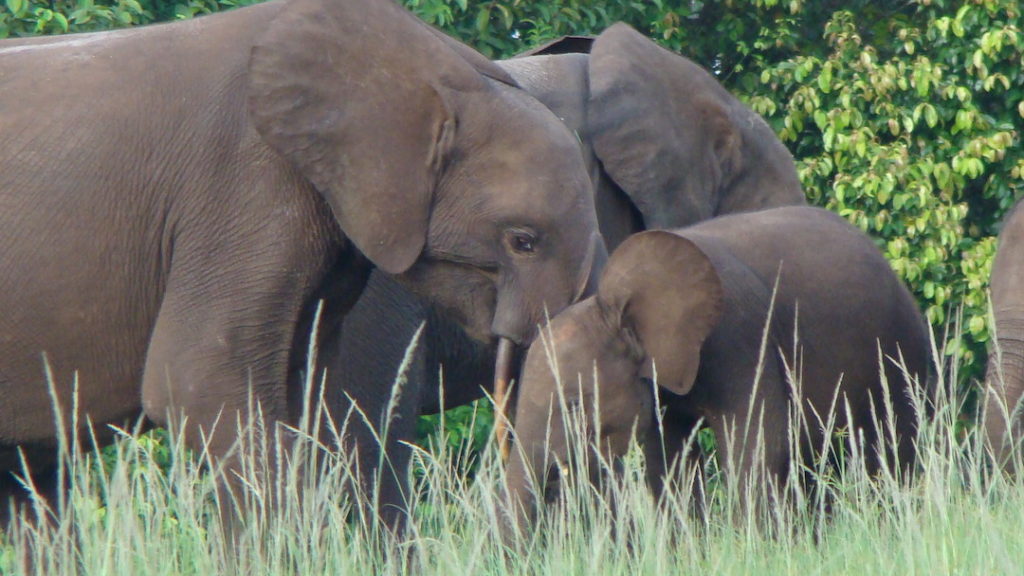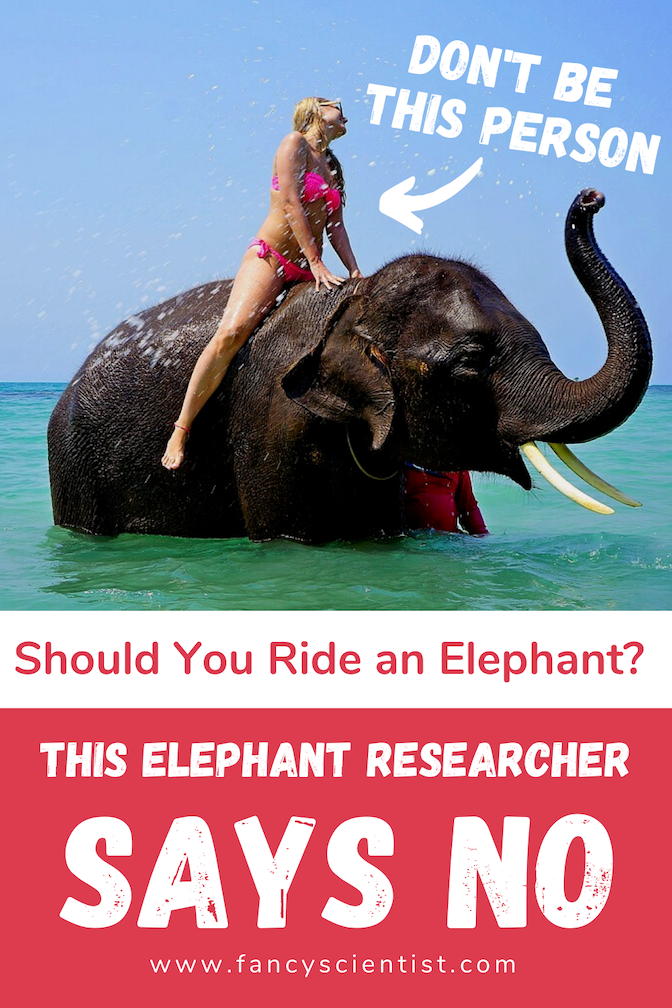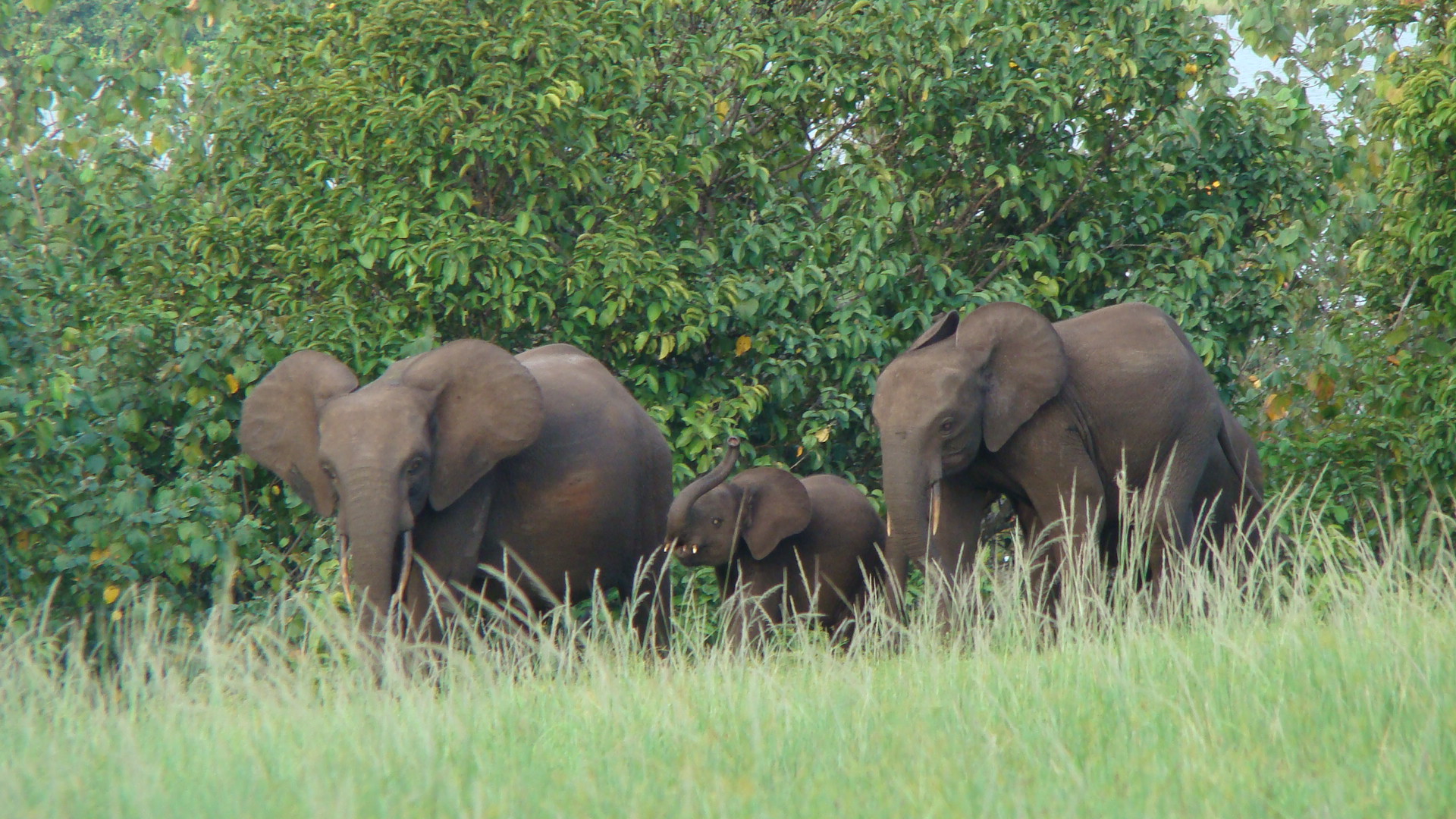I’m not perfect; I’ve definitely ridden elephants before. But when you know better you do better. Now, I am a wildlife biologist with a Ph.D. quite literally in elephant research and I’m here to ask you to please do better. Don’t ride elephants and be extremely skeptical of places where you can even just touch one.
Elephants are a natural magnet for people. They are so bizarre looking, which makes them cute, fascinating, and irresistible. As a young girl, I was super excited to see them at the circus or state fair, and my parents were more than willing to give me an up-close opportunity with an animal I loved.

It was an experience that I still remember pretty well. I was in a tiny basket high up on the elephant’s back feeling a gigantic swaying back and forth motion every time the elephant took a step. I hung on to the basket for dear life with the feeling that I could fall off at any moment.
Not many people think how you get an animal that large to obey commands so well. The handlers make it seem like elephants are gentle giants that love to interact with humans, but the truth is pain. The handlers inflict pain to the elephant throughout their lives. Elephant suffering and straight up abuse is central to our enjoyment of a ten minute elephant ride.
Training an Elephant for Rides
To get the elephant under the handler’s control, they have to “break” the elephant, which involves separation from the mom, tying the baby down with rope, and beating it with the bullhooks. I kept it short here, but you can read more about this process in detail in this excellent National Geographic article.
As an elephant biologist, even without any physical abuse, the separation of the mom and the baby is itself extremely stressful. All elephants in the family group LOVE babies and of course their mothers do the most. When babies are born elephants almost seem to celebrate with many vocalizations and attention towards the baby. The separation from the mom and the baby at such an early age likely traumatizes the elephant for life as elephants have excellent memories.
Lots of people don’t like to believe that people beat elephants to get them to perform and in fact refuse not to believe. I’ve handed out literature at many circus protests and people would call us liars.
Many operations will say that they take the utmost care of their animals and provide them with top-of-the line veterinary care. Their argument is why would they physically abuse their animals if they are their money makers?
But the truth is you really can’t tame an elephant without physical abuse. Elephants are not domesticated animals like dogs, cats, and livestock. Dogs can be trained through rewards only because they have coevolved with us for thousands of years. This coevolution gives them the ability to understand us more, for instance read our facial expressions and understand when we point.

For elephants, the threat of pain is what keeps them under control. How can you tell? A tail tell sign is the bullhook.
Bullhook = Bad
The bullhook is what handlers use to train and control the elephants so you can ride an elephant. It’s basically a large pole with a spike at the end. The spike is used on the sensitive spots of the elephant like the backs of their legs or behind their ears.
The elephant handlers will say that this is used to “guide” the elephants, but if this were the case than they would be okay using something without spikes. In the past, circuses and other forms of entertainment that uses elephants have said bullhook bans were unnecessary. After Los Angeles banned bullhooks, Feld Entertainment, the parent company of Ringling Brothers Circus, said it would stop going there: “It took the view that it wouldn’t be a circus without elephants.”
In other words, the circuses need the bullhook in order for elephants to perform. If they didn’t, they would have been able to perform in places like LA.
In contrast, zoos, at least those that have higher standards like those accredited by the Association of Zoos and Aquariums, use something that looks like a gigantic Q-Tip (although note they can use bullhooks in emergencies). Zoos also have to train their elephants, but for medical purposes, not entertainment. They will use these gigantic Q-to indicate what they want the elephant to do (lift a foot, lend an ear for a blood sample) and get rewarded with a treat.
At the better zoos (like Disney’s Animal Kingdom where I worked), training sessions occurred behind barriers. In other words, the elephants would be on one side and the humans on the other side. This protects the keepers and the elephants can walk away from training sessions whenever they want to.
The Lives of Elephants for Rides
Even if you don’t want to believe that elephants are beaten to be put under control to ride an elephant, the lives of elephants as being rides for people are abuse in itself. In circuses, much of their lives are spent in a tiny trailer driven across the country or they are chained up when not performing or giving rides.
All species of elephants are social, highly intelligent (among the most intelligent animals on Earth), and need large amounts of areas to roam. A tiny trailer and walking around in a circle for rides is not going to do it!
Although riding elephants has become unpopular in the US (the elephant I rode was one at the zoo!) and other developed countries, there are still a lot of opportunities to ride elephants internationally. Decades ago, going to Asia was considered a really big deal and fewer people did it, but now it’s pretty common to see photos of your friends elephants on Instagram from their vacation photos to Southeast Asia.
On the surface, these operations may seem a lot better for the elephants: they are walking around in a jungle (when you are on safari) and are therefore in a more natural habitat and seemingly getting exercise. The owners may tell you even that It’s a sanctuary for elephants, but if you are riding elephants, it’s still not a good experience for the elephants.
If they are using a bullhook, this is a clear sign that the elephants are still being abused. Even though these elephants may look like they live in the jungle, they are also deprived of the social contact they need, are chained into place when not working, and often are overworked, sometimes even worked to death. Here are a few news stories on the topic:
- Male elephant dies of overwork in Dak Lak
- Captive elephant serves tourists to death in Vietnam
- Emaciated elderly elephant dies after ‘70 years a slave’ (emaciation was hidden by costume!)
A Threat to Conservation
In Asia, many places capture their baby elephants directly from the wild so you can ride an elephant. This means they are taking a baby animal that could have lived its life free in the wild it and abusing it into submission strictly for human entertainment. It is better when the elephant is captive bred because captive elephants cannot be released back into the wild successfully, however, if the elephant is still giving rides and performing tricks, it is most definitely still being abused..
In Thailand, taking elephants from the wild is also a conservation problem; it is a threat to the Asian elephant as a species. In this article, Dr. Simon Hedges, co-chair of the IUCN/SSC Asian Elephant Specialist Group (and a scientist I worked with!) said that “one of the main threats to elephants in their main remaining habitat blocks in Thailand is … the illegal captures for the trade in live elephants.”
It’s Never Really Safe to Ride an Elephant
Any time you are dealing with a wild animal, there is a danger to you. Remember, elephants are not domesticated, but tamed, and in many operations around the world taken directly from the wild.
In this case, an elephant shook a man off of his back. The article reports that this was most likely due to musth, which is a heightened hormonal state in male elephants when they want to mate with females (like rut in deer). The company/handler not knowing how to identify musth and/or allowing the male to be in musth with tourists is extremely irresponsible and dangerous.
No matter how tame a wild animal is thought to be, it can always change in an instant. This woman was famously and brutally attacked by her friend’s pet chimpanzee so bad that she had to get a face transplant. This woman was killed by a former entertainment elephant at a very reputable sanctuary that takes extremely good care of their elephants. These elephants ALL have traumatic histories and you never know if they will snap.
In addition to not riding elephants, you should also never support operations which do any of the following:
- Use bullhooks
- Make the elephants do unnatural tricks like painting, standing on small pedestals, balls
- Have loud music and performances with and around the elephants
So maybe I convinced you that you shouldn’t ride an elephant, but what about all of those cool sanctuaries where you can feed elephants and pose with them? Here’s how you can tell a real elephant sanctuary from a sham.

Love this post? Share it with friends!




